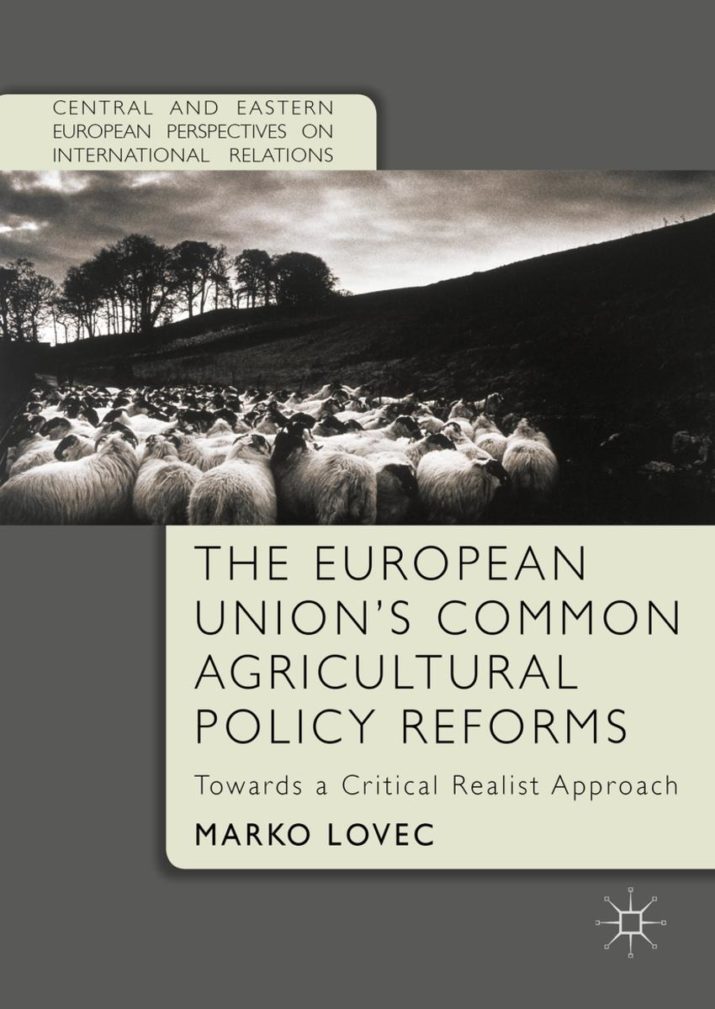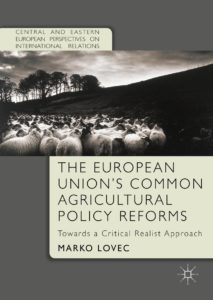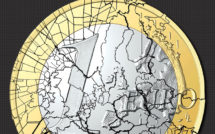
The European Union’s Common Agricultural Policy Reforms: Towards a Critical Realist Approach by Marko Lovec
 This is part of our special feature on The Crisis of European Integration.
This is part of our special feature on The Crisis of European Integration.
The Common Agricultural Policy (CAP) has played a central role in the story of the European Union and its internal and external development. The CAP has undergone a number of reform processes, some more radical than others, and the stated purpose of this book was to test three alternative approaches to explaining and understanding these reforms. These theories are defined as interest-based, ideational, and critical realism. As can be surmised from the title of the book, the author favors the latter theory as he argues the others have failings that can lead to an incomplete understanding of the reform process.
Relevancy for the work is claimed in three main areas. First, it is proposed that the book takes a view of the whole reform process of the CAP from inception to the 2014 reforms. This can contrasted with other analysis which has tended to focus on particular reform “events”– the MacSharry or the Fischler reforms, for example. The second claim is that, given the importance of the CAP in international affairs, such as world trade negotiations, its prominence in the EU budgetary process and other contemporary debates, the book contributes to a critical realist explanation of these issues. Third, it is argued that the book demonstrates practical relevance as it brings the debate about knowledge down from the theory of social science to the concrete example of the Common Agricultural Policy. These claims of relevancy will be returned to later in the review.
The book is split into two parts. The first part outlines the theoretical framework and comprises two chapters, the first examines existing approaches to explaining CAP reforms and the second outlines the critical realist approach. The second part of the book outlines the CAP reforms themselves and separates these into three time periods. Loosely these periods are: from the inception of the CAP until the late 1980s; the reform processes of the 1990s (for example the MacSharry reforms and Agenda 2000) and; the period covering the Fischler reforms to the most recent agreement. The book concludes with a summary chapter.
In Part I, Chapter 2 follows a logical structure and outlines the many theories that attempt to explain the existence of agricultural policy in general, the CAP in particular and why reform of the CAP has taken place. These include rational choice theory, public choice theory and liberal intergovernmental theory (LIG). Each of the relevant theories is explained in a succinct form and as such the chapter provides the reader with a useful summary of alternative ways of understanding the policies and policy changes considered in this book. Chapter 3 is the theoretical core of the book and considers the interest based and ideational theories within the constructs of positivism and post-positivism. It is here that the author argues that failings in both interest based and ideational theories can lead to an incomplete understanding of the reform process. He then proceeds to describe and explain Critical Realism and its relationship with Critical Social Geography and Critical Political Economy. As someone who has worked in the area of agricultural policy for a number of years, but with what may be described as a traditional agricultural economics training, I found this theoretical part of the book challenging but nevertheless interesting.
Part II of the book, provides a useful and readable synthesis of the CAP reform process and the changes that have occurred since its inception, through the 1980s, the Eastern European accession process and up to the latest reforms. In this regard it fulfils one of the key contributions claimed for the work. However, after having digested the author’s critique of the interests based and ideational approaches in Part I and having spent time getting to grips with the concepts underlying critical realist theory, I was preparing for my understanding of the CAP reform process to be challenged in Part II. I was therefore somewhat surprised to find what appeared to be an exposition of CAP reform that equated strongly with my understanding of the changes that have occurred in the CAP since its inception and the drivers of these changes. Three possible reasons spring to mind as to why this is the case. The first is that due in part to my disciplinary background I may have completely misunderstood what critical realism is. The second is that the author somehow fails to link the theoretical component of the book with the exposition of CAP reforms. The final reason may be that I am in fact a critical realist, but just had not realized it!
This said, I think it is valid to argue that the book fails to show clearly to a reader new to the concept of critical realism how understanding of the CAP reforms described in Part II differs when viewed through a critical realist approach. In total in the book there is one short section in Chapter 3 of less than two pages which is directed at a critical realist explanation of CAP reforms. Linked to this, I am also not sure that the book achieves its goal of providing an alternative (critical realist) understanding of the main issues such as CAP and trade negotiations, the EU Budget and other contemporary issues. Therefore, it did not seem clear to me that the author demonstrates the practical relevance of the book in bringing the debate about knowledge down from the theory of social science to the concrete CAP example.
This criticism aside, there is much to recommend in this book. Whether or not you buy into the critical realist approach to understanding the reform of the CAP, the book is an interesting read and provides the reader with a useful overview of the development of the CAP. At the same time it is thought provoking because it challenges the reader to consider their own approach to science and their understanding of how knowledge is generated. Finally, given all that is going on within the European Union at the moment, I look forward to a critical realist explanation of Brexit and its implications for future CAP reforms.
Reviewed by Alan Renwick, Lincoln University
The European Union’s Common Agricultural Policy Reforms: Towards a Critical Realist Approach
by Marko Lovec
Publisher: Palgrave Macmillan
Hardcover / 195 pages / 2016
ISBN: 978-1-137-57278-3
Published on November 2, 2017.




